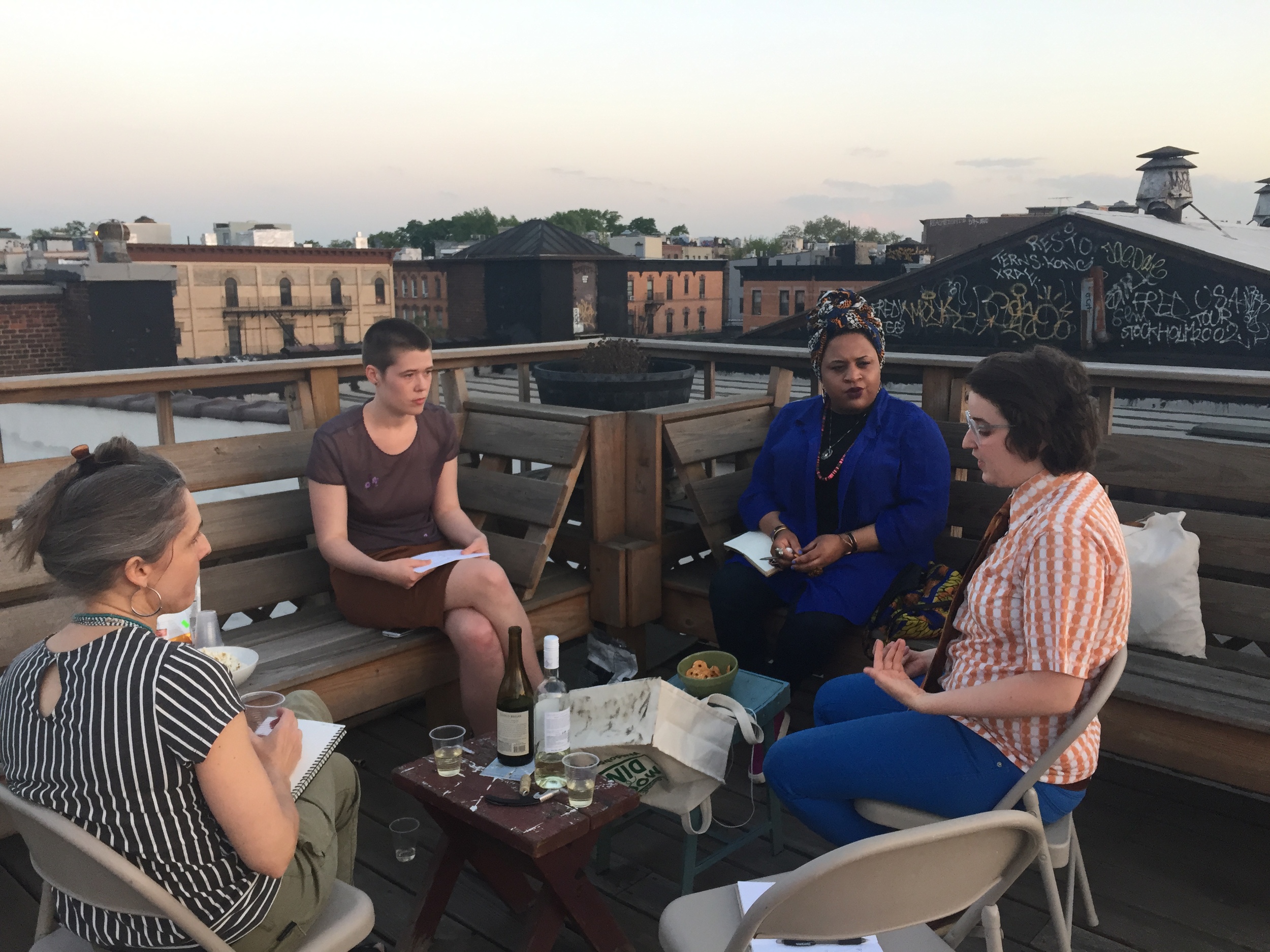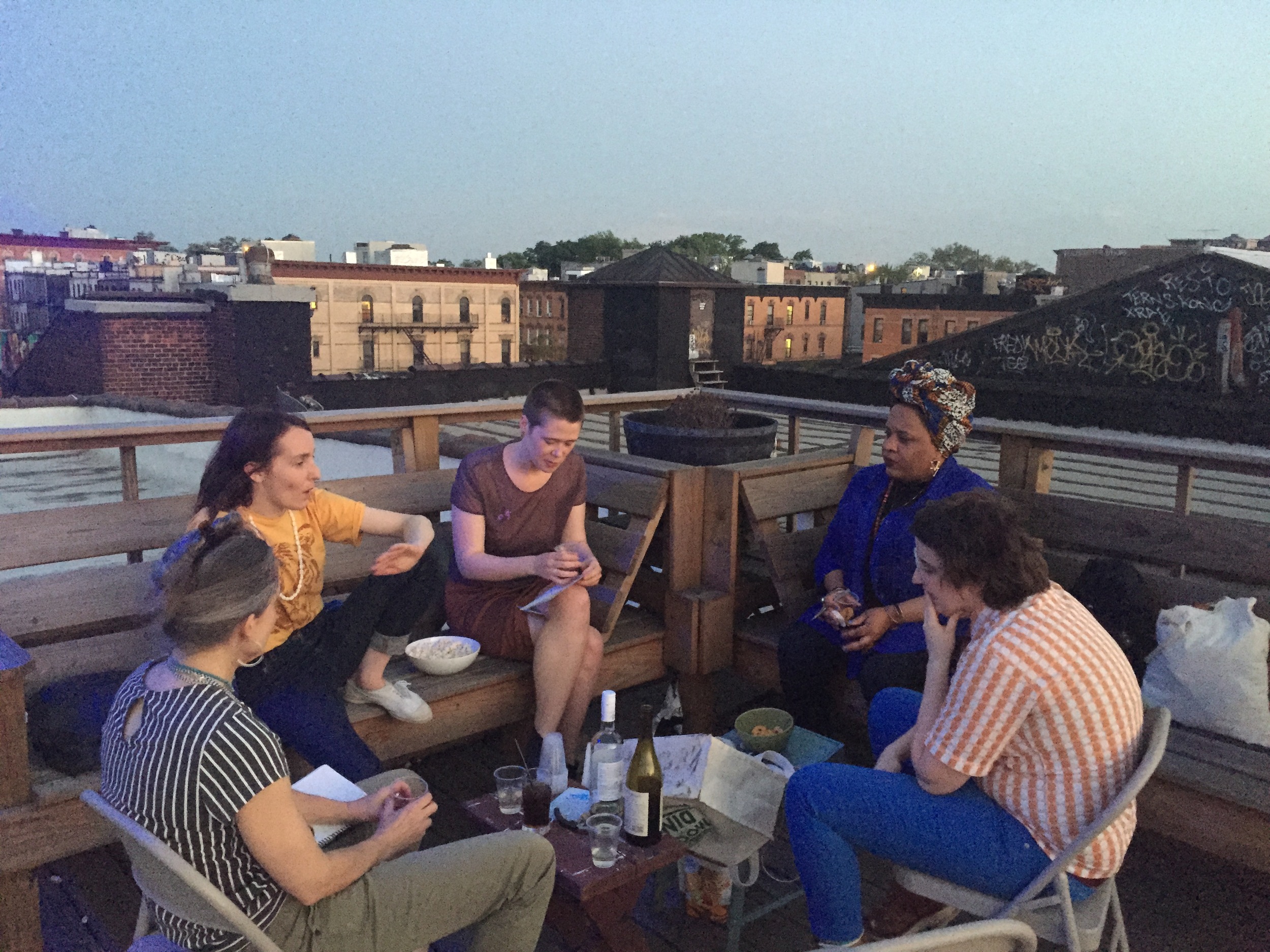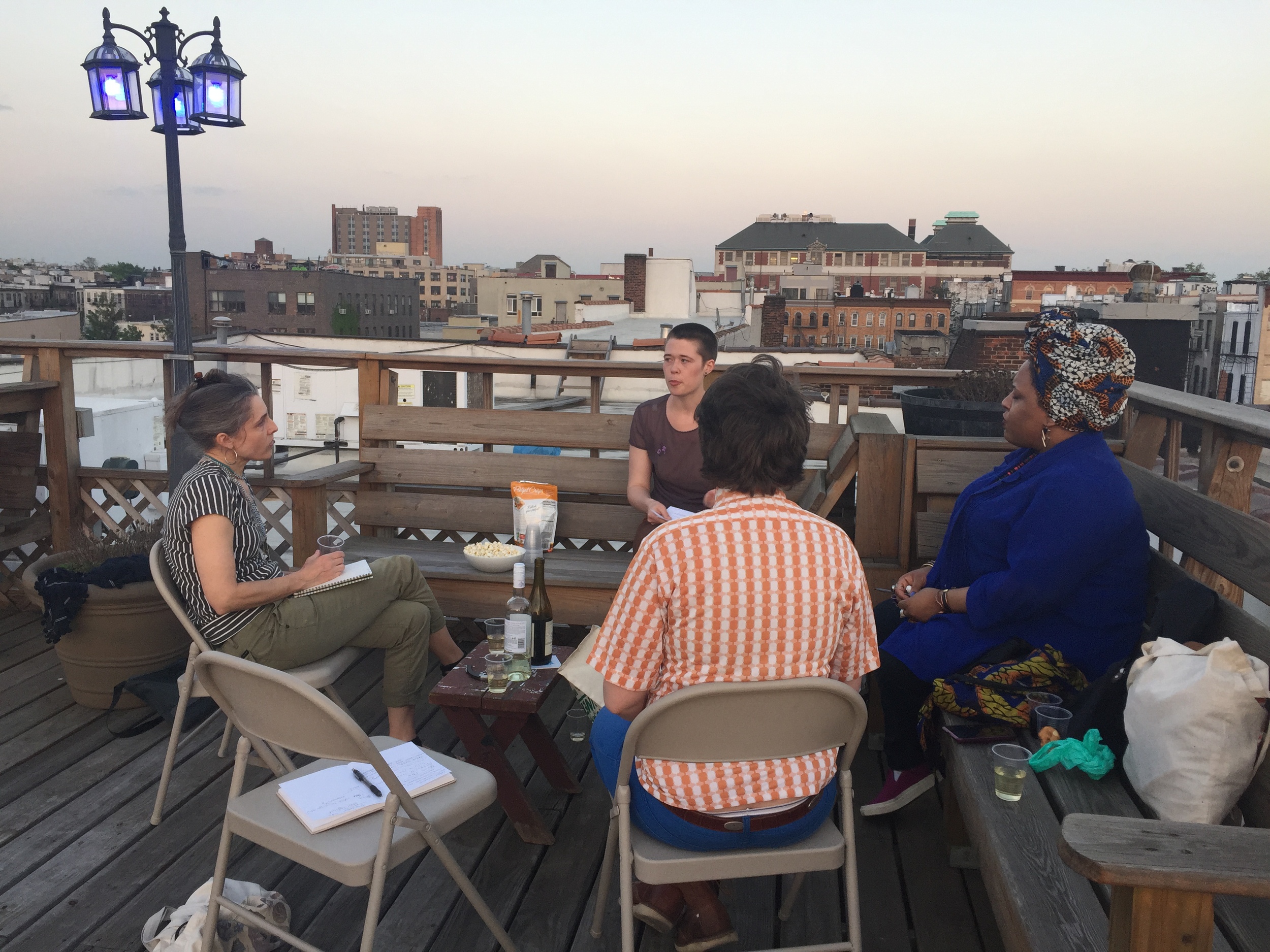Please allow 30 seconds for the audio to load
- Has everybody had some sort of arts education?
- Has the question of responsibility been phased out of art school?
- What are the ethical responsibilities of the artist?
- What is the responsibility of art school?
- Which plane of reality should artists face?
- Can exceptionally ethical art be terrible?
- Can ethically terrible art be exceptional?
Planes fly overhead as the group looks over the city on the rooftop of Brooklyn Brush Studios for another discussion on responsibility hosted by artist and designer Sessa Englund. Several of the participants have ties to the art department at SUNY Purchase College which leads to the discussion about art school and it’s relationship to the art world, the marketplace and how art functions within these institutions. Olivia Fox explains how she was admitted to many top-tier art schools but was unable to attend based on financial circumstances, even after receiving a 50% merit scholarship. Sarah Walker describes how blue chip galleries use engines of capitalism similarly to banks. She goes on to describe that those who graduate from top art schools go on to show at top galleries and more often than not make empty art objects that lend themselves easily to being written about in catalogs in order to be later purchased. We discuss money’s role in the art marketplace and in the life of an artist. While money is an unavoidable issue in life, it’s looked down upon when it comes to the topic of ethics. Sessa points out that while responsible artists should not be concerned with money as a top priority, it’s difficult not to be unless you already have it. Through the conversation about the irresponsibility that exists in the art world, we see that responsible artists, art and art spaces are those that are inclusive, flexible and representative of current conditions. Galleries and museums that only feature the work of white men do not fit this description when we see an overwhelming amount of women over men graduating from art school, as pointed out by Sarah. As an excellent closing note, Olivia says that people of privilege need to check that and think about things that they may not want to think about. Futhermore, she says that we need to develop a criteria upon which to judge art.





